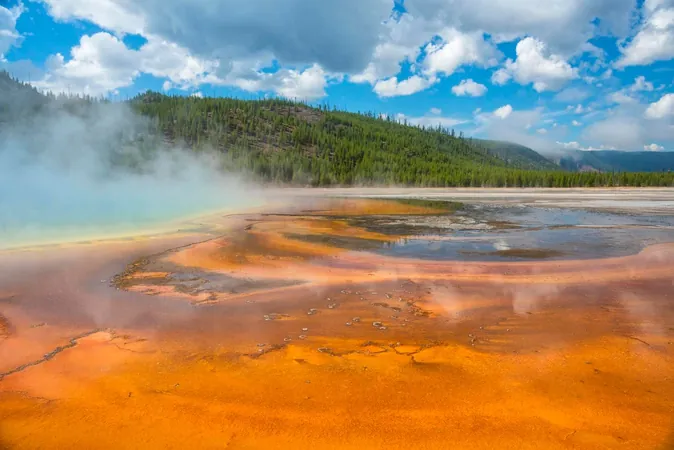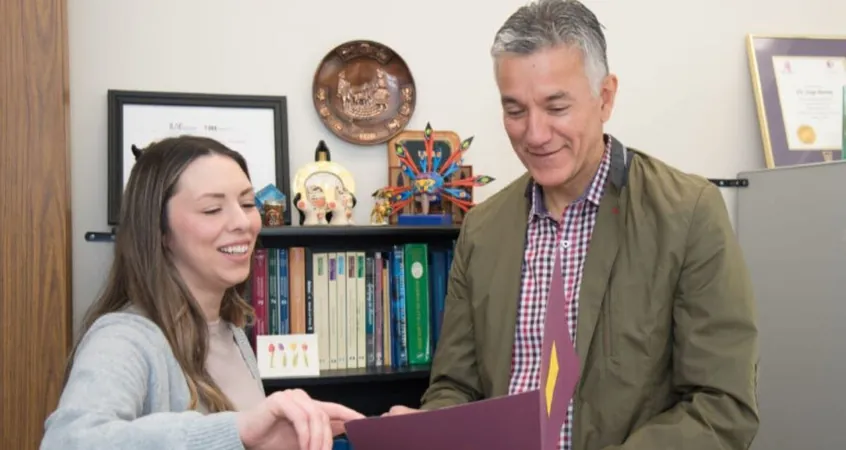
Yellowstone's Secret Safety Valve: How a Magma Cap Keeps the Volcano in Check
2025-04-26
Author: Benjamin
Unveiling Yellowstone's Hidden Secrets
A groundbreaking study from a collaboration of top universities, including Rice, New Mexico, Utah, and Texas at Dallas, has revealed fascinating new insights into Yellowstone National Park's volcanic system. By employing cutting-edge seismic imaging techniques, researchers have mapped the intricate network of magma, gases, and fluids lurking beneath the iconic geysers and bubbling mud pots.
The Safety Valve Mechanism
At the heart of their findings is a remarkable discovery: a cap of partially molten rock acts like a natural "safety valve". This geological feature allows gases to escape, significantly reducing the risk of a catastrophic volcanic eruption that many fear. Despite sensational headlines predicting a doomsday scenario, the team found no unusual volcanic activity to suggest an impending explosion.
Revolutionizing Our Understanding
Earlier research indicated that Yellowstone's magma system could be buried anywhere from 3 to 8 kilometers deep. Pinpointing the exact location of this magma reservoir will help scientists predict the volcano's future behavior and underscore what keeps it from erupting. As Brandon Schmandt, a professor at Rice University and coauthor of the study, states, "For decades, we've known there’s magma beneath Yellowstone, but the exact depth and structure of its upper boundary has been a big question."
How They Did It
Using a massive 53,000-pound vibroseis truck, typically found in oil exploration, researchers generated tiny seismic waves that traveled underground. With an array of 600 seismometers tracking the waves, they compiled a treasure trove of data revealing the geological boundaries beneath Yellowstone.
Shocking Discoveries Below the Surface
What surprised the researchers was the discovery of a significant boundary reflecting seismic waves at a depth of approximately 3.8 kilometers. This distinct reflection signal indicated a complex interaction of magma and volatile gases. Chenglong Duan, the study's lead author, elaborated on their unique imaging method that led to this clarity: "We made one of the first super clear images of the top of the magma reservoir beneath Yellowstone caldera."
Understanding Volcanic Activity
Fluids, particularly volatile components like water and carbon dioxide, are crucial in driving eruptions. When magma rises, it can form gas bubbles that lower its density and push it toward the surface. However, the current state of Yellowstone indicates an eruption is unlikely. Schmandt points out, "Although we detected a volatile-rich layer, its bubble and melt contents are below levels typically associated with imminent eruption."
A New Era in Volcanic Monitoring
The identification of this volatile-rich layer ushers in a new standard for monitoring Yellowstone's volcanic activity. Tracking changes in magma content or gas build-up could provide crucial early warnings in the future.









 Brasil (PT)
Brasil (PT)
 Canada (EN)
Canada (EN)
 Chile (ES)
Chile (ES)
 Česko (CS)
Česko (CS)
 대한민국 (KO)
대한민국 (KO)
 España (ES)
España (ES)
 France (FR)
France (FR)
 Hong Kong (EN)
Hong Kong (EN)
 Italia (IT)
Italia (IT)
 日本 (JA)
日本 (JA)
 Magyarország (HU)
Magyarország (HU)
 Norge (NO)
Norge (NO)
 Polska (PL)
Polska (PL)
 Schweiz (DE)
Schweiz (DE)
 Singapore (EN)
Singapore (EN)
 Sverige (SV)
Sverige (SV)
 Suomi (FI)
Suomi (FI)
 Türkiye (TR)
Türkiye (TR)
 الإمارات العربية المتحدة (AR)
الإمارات العربية المتحدة (AR)